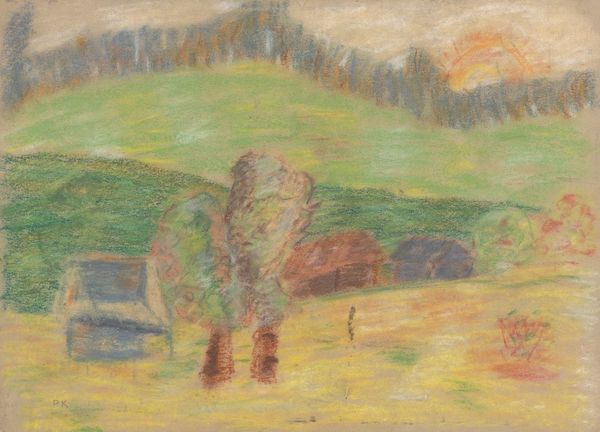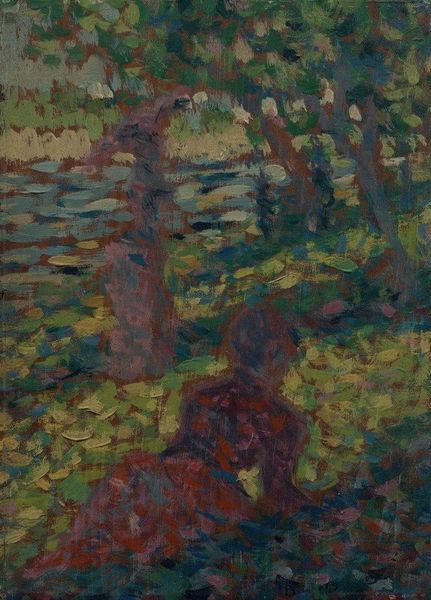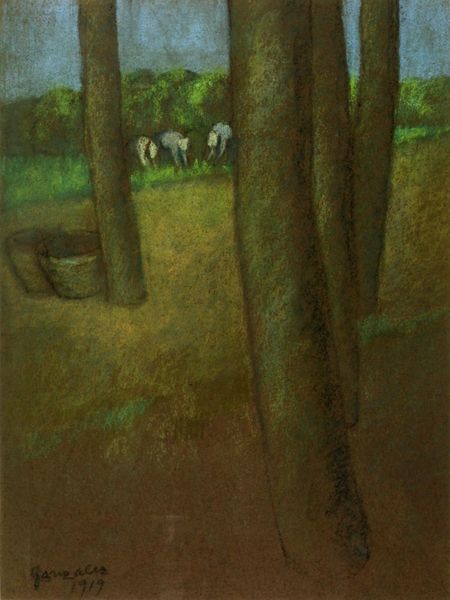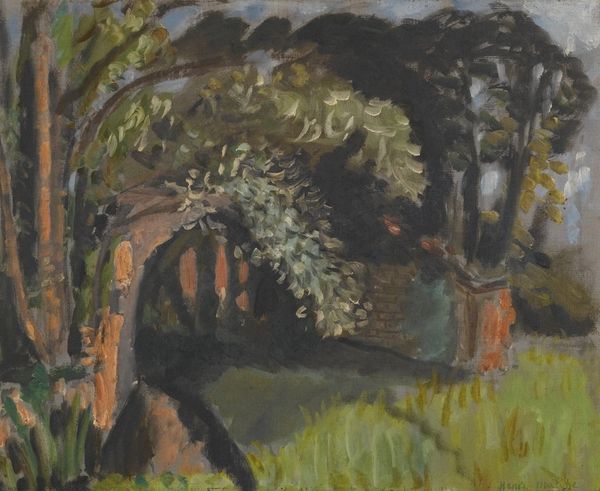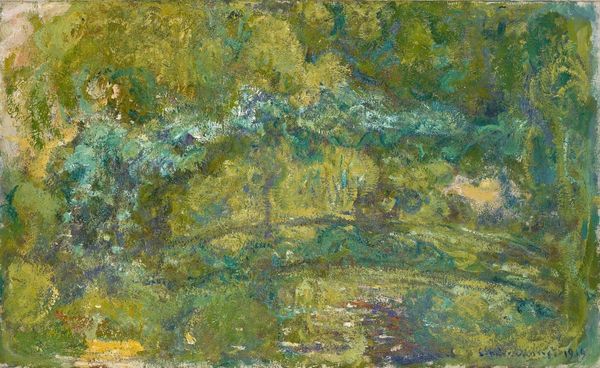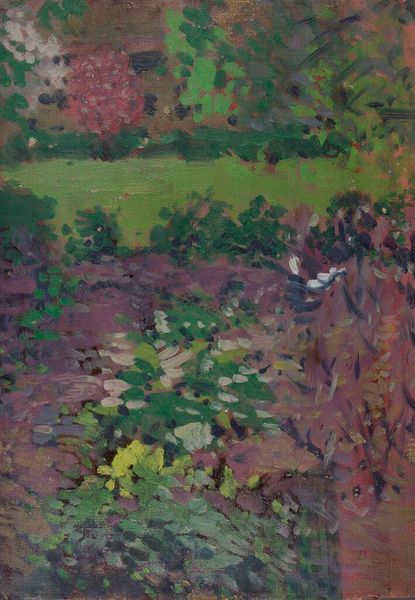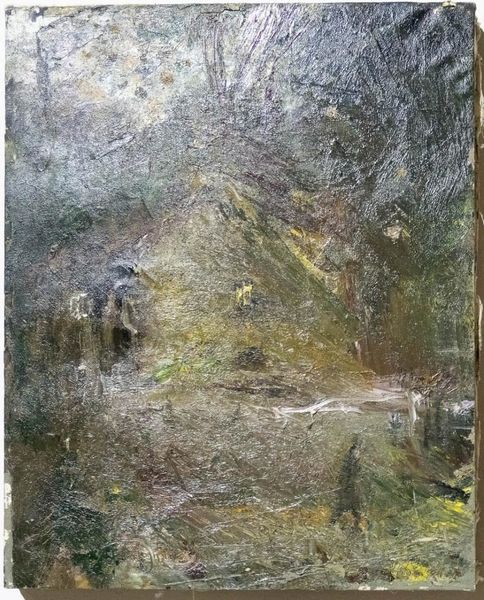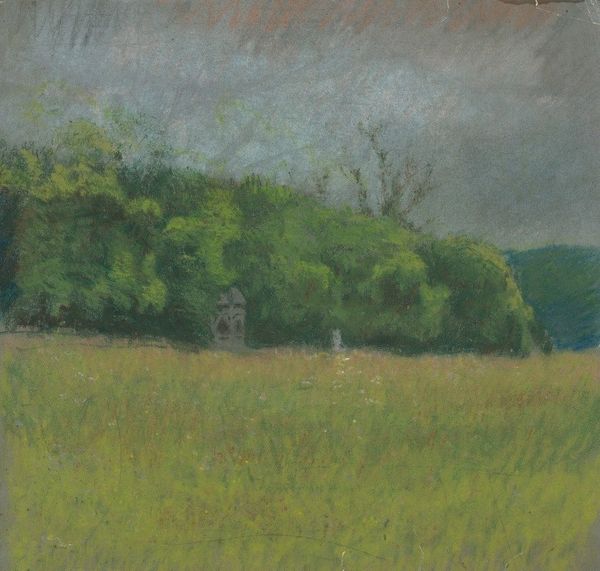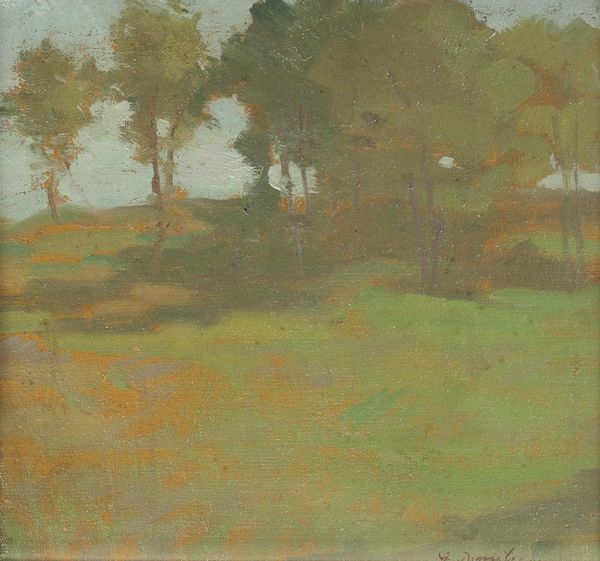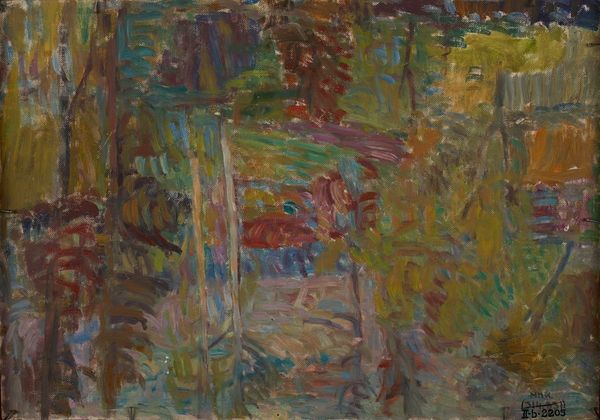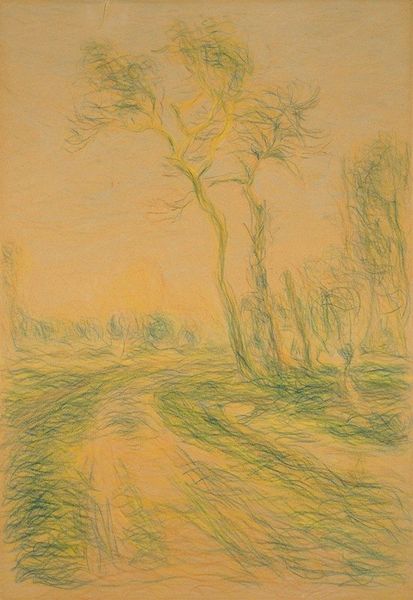
Copyright: Public Domain: Artvee
Editor: We're looking at "Etude pour Matin Ensoleillé," a pastel work from around 1910 by Édouard Vuillard. I find the overall effect incredibly dreamlike and indistinct; the pervasive green and beige palette almost blends the figure into the landscape. What strikes you about this piece? Curator: What interests me is the apparent blurring of the public and private spheres so typical of Vuillard. We see a scene that’s seemingly outdoors—trees, a gate perhaps—but it’s rendered with the same intimate, domestic softness that he often reserved for interior scenes of family life. Editor: That's an interesting point about the conflation of public and private. Do you think it speaks to any broader social shifts happening at the time? Curator: Absolutely. Vuillard was working in a period where ideas about privacy and publicity were rapidly evolving, driven by things like increased urbanization and the rise of mass media. Think about photography and its growing accessibility. Here, I think he's responding to this, suggesting how easily those boundaries could be transgressed, or at least, how fluid they had become. He wasn't alone in this. Many artists began to reflect in their paintings everyday life, which entered into art spaces blurring what was worthy or not to be put on display. Editor: It’s amazing to consider how socio-political shifts can be subtly reflected in even the most intimate-seeming artworks. I guess it just reinforces the idea that art is never truly created in a vacuum. Curator: Exactly! And considering this was made using pastel, that fragile medium further adds to the sense of fleeting intimacy and, perhaps, even vulnerability. So, in a way, he questions if he even intended it for public display. Editor: It's been enlightening to view this through a social and historical lens. It reveals so much more than what first meets the eye. Curator: Indeed, and by understanding the cultural context, we start to see art not just as a beautiful object, but as a mirror reflecting and shaping the society around it.
Comments
No comments
Be the first to comment and join the conversation on the ultimate creative platform.
